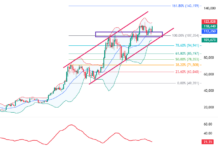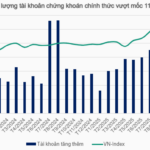The latter half of August and early September are traditionally considered a low point for the market, coinciding with the Ghost Month—a period when consumers tend to avoid purchasing high-value assets.
To counter this trend, automakers have rolled out substantial promotional programs to boost customer interest. Surprisingly, even after the Ghost Month ended, the price wars intensified rather than subsiding.
By early October, multiple car brands launched new promotional campaigns, with some models offering even deeper discounts than the previous month.
Toyota
Toyota continues to offer 100% registration fee support for three flagship models: Vios, Veloz Cross, and Avanza Premio. The Vios sedan sees reductions of VND 46-50-54 million for the E-MT, E-CVT, and G-CVT variants, respectively.
Post-discount, the Vios’s price drops from VND 458-545 million to VND 412-491 million, depending on the variant. This competitive pricing is expected to solidify the Toyota Vios’s leading position in Vietnam’s B-segment sedan market.

The urban SUV duo, Yaris Cross and Corolla Cross, along with the Hilux pickup and Camry sedan, receive 50% registration fee support across all variants. This marks the first time the Camry has been included in Toyota’s promotional list since its latest generation launched last year.
With a discount equivalent to VND 61-77 million, the Camry’s October prices range from VND 1.154 to 1.453 billion.
Honda
Honda has increased its registration fee support from 50% to 100% for the BR-V L and HR-V G models. Additionally, the HR-V L and e:HEV RS (hybrid) variants, introduced in April, now receive 50% registration fee support for the first time.

The Honda HR-V hybrid receives its first promotional offer since its April launch.
The Honda City and Civic hybrid continue to enjoy 100% registration fee support, with discounts of VND 50-57 million for the City and approximately VND 100 million for the 2024 VIN Civic hybrid.
Other Honda models, including the CR-V L/G, Civic RS/G, and BR-V G, offer 50% registration fee support, with discounts ranging from VND 31.5 to 55 million.
Mitsubishi
Mitsubishi has also ramped up promotions for its key models in October. Notably, the newly launched Xpander AT Premium and Xpander Cross receive 100% registration fee support, equivalent to VND 66-70 million. Older MT and AT versions see discounts of VND 28-60 million.

The new Xpander AT Premium and Xpander Cross launched in September.
The Xforce B-segment SUV offers 100% registration fee support for the GLX and Premium variants, totaling VND 60-68 million. The Ultimate variant provides a combined promotion of VND 50-55.5 million, including 50% registration fee support and gifts.
Other Mitsubishi models, such as the Triton 2WD AT GLX and Attrage MT, also receive 100% registration fee support, while other variants get 50% support.
Subaru
Subaru offers discounts ranging from VND 140 to 308 million for the Forester in October. The top-tier 2.0 iS EyeSight variant is priced at VND 919 million, a VND 70 million reduction from last month’s promotional price.

According to sales consultants, these are the final Thai-imported Foresters being discounted to clear inventory. The new Japanese-imported generation is expected to arrive by year-end.
The Crosstrek SUV is priced between VND 899 million and 1.029 billion, with discounts of VND 199-239 million, significantly up from September’s VND 99-139 million.
Hyundai
Hyundai offers promotions of up to VND 200 million for its best-selling models, with specific discounts varying by variant. The Grand i10 has been added to the promotional list, and the Accent and Stargazer receive an additional VND 10 million discount, along with an extended 8-year warranty for these models and the Santa Fe.

The Santa Fe and Palisade SUVs offer the largest discounts, reaching hundreds of millions of VND. These promotions not only enhance their competitiveness in their segments but also put pressure on lower-tier models.
Kia
Kia joins the price war with October promotions for models including the Carnival, Sonet, Seltos, Carens, Sportage, K3, K5, Morning, and Sorento (previous generation).
Discounts range from VND 5 million to 210 million, with the Carnival 3.5G Signature 7-seater (2024 VIN) receiving the largest reduction. The newly launched New Sorento and New Morning offer only service gifts.
Toyota Aims to Expand Green Vehicle Investments, Boost Local Production, and Make Cars More Accessible in Vietnam
On the morning of September 25th, Deputy Prime Minister Hồ Đức Phớc received Mr. Tiền Quốc Hào, Chairman of Toyota Asia, and his delegation during their working visit to Vietnam.










































